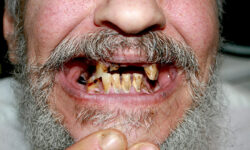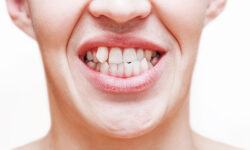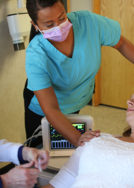Written by Dr. Alice Vessel
Novacaine is actually NOT novacaine...
Novacaine is actually NOT novacaine...
People use the general term of novacaine to denote the numbing agents that we use today. The chemical structure of novacaine was derived from esters. There were many complications and allergies with that preparation.
Our modern anesthetics are derived now from the biochemical amide group. Dentists use many different preparations for different circumstances. Sometimes, its desirable to mix the anesthetics’ properties creating, in effect, a cocktail.
Epinephrine is the ingredient in local anesthetics that make you feel “jumpy” or like you have had five cups of leaded coffee. It is in effect, adrenaline, which is secreted naturally by your body. When added to anesthetics, it constricts the blood vessel in the area thus increasing length of time the person is numb.
While some people cannot tolerate the side effects of local anesthetics, there is rarely a true allergic reaction. In addition, the amount of local anesthetic needed to reach an overdose is quite substantial. It is therefore considered a very safe drug for use with dental procedures.
Lidocaine (or xylocaine) with epinephrine is the most widely used local anesthetic in dentistry. Marcaine(or bupivacaine) lasts the longest. Carbocaine(or mepivacaine) comes with no epinephrine. Septocaine (or articaine) achieves achieves profound numbness.
When you put ‘em all together and churn ‘em all around, that’s what its all about!









